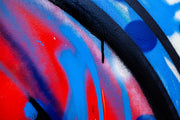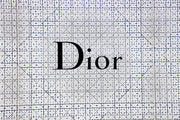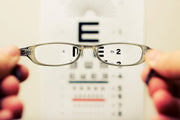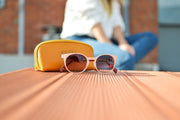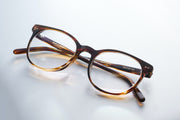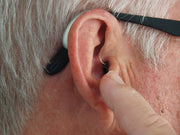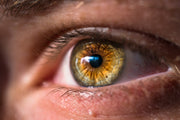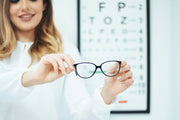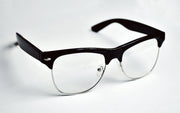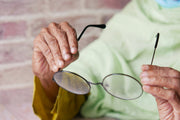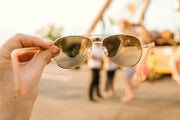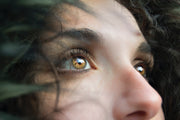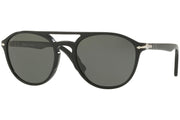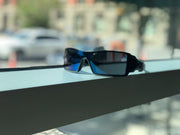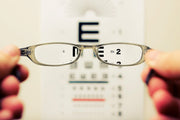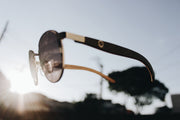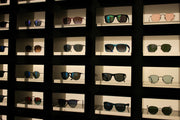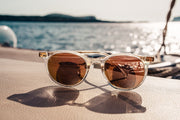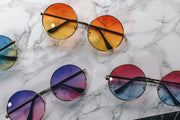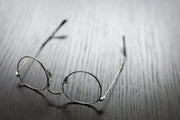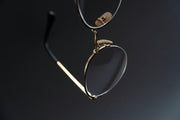Fashion is an ever-evolving cycle that follows fashion trends. What used to be popular 10-15 years ago is way out of date. It can be difficult to keep up.
Luckily, there are ways to pick fashionable glass frames that can make you feel and look younger.
What Eyeglass Frames Can Make You Look Younger?
Generally, larger and warm-colored eyeglass frames can make you look younger. But there is more to how to choose a suitable frame for you.
Shape
Frames that complement the shape of your face can elevate your looks. Frames that can make you look younger are available in basically any shape too!
You may want to use frames that soften your natural features. For people who want to hide their wrinkles, upward-swept rectangular frames with rounded edges or cat-eye frames can help you achieve a younger look. Keep in mind, eyeglasses that fit appropriately should not touch your cheeks.
Color
Warm colors complement most faces, especially browns, burgundies, berry tones, and jewel colors. Of course, you will choose a pair of glasses that suits your skin color.
You could also select a shinier material to provide your eyes an extra gleam. Try to avoid flat or matte colors, such as frosted silver or jet black. This might feel a bit out of your comfort zone, but once you find a color you love, you will be amazed at how your all-natural features stand out.
Size
You will also want to avoid frames with a low vertical proportion. Not only does this constrict your field of vision, but it also makes you appear older than you are.
Today larger frames are in fashion nowadays. You can also play with more space, color, shape, and visibility. Just be careful to choose a good shape for yourself. Your frames should enhance your face, not cover it up.
Remember To Measure Your Face
Because faces come in all shapes and sizes, it's important to know your face shape before picking out new glasses. However, you should know your face shape first.
The measurements and steps listed below are used to measure the shape of your face:
Step 1: Measure Your Face Length
Begin from the center of your hairline and end at the tip of your chin to measure your face length. Do not curve your measuring tape.
Step 2: Measure Your Forehead
Measure your forehead from your eyebrows' ends. Again, don't curve your measuring tape!
Step 3: Measure Your Cheekbones
Measure between the outside edges of your cheeks for the correct measurements. Try to keep the tape straight.
Step 4: Measure Your Jawline
Start at your chin and measure the length from your chin to the end of your jaw on one side of your face. Multiple this number by 2 to get your jawline measurement. Do not curve your measuring tape!
What’s Your Face Shape?
Now that you have measurements of your face, it's time to determine your face shape!
Round Face
Your face is exactly round, and your cheeks, forehead, and chin provide soft, curved curves. A round face usually come with the same height and width. Your cheeks are typically the broadest part of your face.
Square or rectangular frames are traditionally used to counterbalance round facial features. We recommend avoiding frames that are round or small and any frames that are without a rim. These features can make your face appear much larger than it is.
Oval or Oblong Face
A lengthy, oval face is longer than it is broad, and has gentle curves like a round face. Your face is slender, and your cheekbones are probably the broadest section of your face.
People with an oval shape will likely appreciate geometric frames with a prominent bridge. You can try out frames that aren't wider than the widest part of your face. If you have an oval face, don't choose frames that cover more than half of your face which can reduce your natural symmetry.
Square Face
A square face is similar to a round face, as it can be rather small in height and elongated in width. Your facial features are typically sharper, like a square jaw.
Round or oval frames that sit on your cheeks might soften your angularity and give your appearance a slimmer look. We recommend avoiding square, pointed frames because they may make your face look bulky.
Diamond Face
The diamond face has plenty of edges that are sharply defined by a narrow forehead and chin. Your jaw and nose are likely aligned with a natural point near your chin.
Cat-eye frames or frames that are wider than your cheekbones, such as oval frames, can draw focus to your face's delicate features. Avoid wearing boxy, narrow frames because they can enhance the look of certain features of your face.
Heart-Shaped or Triangular Face
A heart-shaped face has a broader forehead and a smaller jawline. You're probably shaped with soft curves under your eyes and cheekbones that go beyond the chin. Your chin is pointed and roughly streamlined.
Square or rectangular frames with curved edges can complement your face shape. You should choose frames with low-set temples and a downward-leading edge to achieve symmetry. Avoid frames with colorful embellishments, which tend to draw attention away from your face's lower half.
Other Tips On How To Choose Frames To Make You Look Younger
Consider Your Lifestyle
The selected frames will be with you for at least the next year. You must choose something you will appreciate, but you also want something that will work for your day-to-day life.
If you spend a lot of time in front of a computer, you might benefit from blue-light-blocking lenses. Also, if you spend a lot of time inside and outside, you may benefit from transition lenses. Make sure your frames are perfect for your everyday life!
Consider Your Preferences
This shouldn't be too complex, but perhaps the most important thing. You have to take time to look for frames you love!


